Mysterious Lost Kingdom Of Urartu And Its Enigmatic History
A. Sutherland - AncientPages.com - The lost kingdom of Urartu is shrouded in mystery because very little is known about this ancient place and the origin of its people.
The capital of Urartu was the rock fortess Tushpa. Credit: Adobe Stock - Koraysa
Still today, archaeologists look for more traces of the mysteriously lost kingdom of Urartu, as the Assyrians called it. The Hebrews referred to it as Ararat, and in more modern times, it has been named the Kingdom of Van.
The kingdom's beginnings are lost in the mists of pre-history. Still, Urartu was situated near Lake Van and the mountainous plateau between Anatolia, Mesopotamia, the Iranian Plateau, and the Caucasus Mountains before it was destroyed. The earliest documents mention the land of Urartu can be found in Assyrian sources. This Iron Age kingdom was established around the mid-ninth century BC and conquered by the ancient Iranian people of Medes in the early 6th century BC.
Based on what we know, the people of Urartu were famous metalworkers and spoke a language related to Hurrian (a language with no other known connections). They adapted the Assyrian cuneiform script for their purposes.
Although it cannot be said with certainty, Urartu was ruled by a single dynasty from the ninth century, expanding three kingdoms to the south when Assyria was weak.
Two of the Urartian gods holding an unknown object. The plates were decorations for other items and were found at Rusahinili, an ancient Urartian fortress in Turkey. Credit: Credit: Dosseman - CC BY-SA 4.0
The true origin of the people of Urartu has yet to be discovered. Some historians think these people migrated from somewhere to the west into the Armenian plateau, then, for the most part, known as Nairi. They called themselves Khaldians or children of the god Khaldis, just as the name of the Assyrians reflects the name of their god Assur.
In 1939, Professor Shestokov, a Soviet Russian historian, wrote that the oldest states of the Soviet Union were founded 3,000 years ago to the south of Transcaucasia. The oldest among them was called Urartu. Its kings ruled over Georgian tribes.
In 1827, German scholar Friedrich Eduard Schulz first attempted to study the ancient ruins. Schulz made copies of several inscriptions and had these sent back to Paris.
Unfortunately, Schulz and his party were attacked by bandits in Kurdistan and killed in 1829.
The copies were not published until 1840 in Paris, where there were shown to be various inscriptions in Ancient Persian and Assyrian cuneiform, itself not fully translated, while the rest of the inscriptions were in an unknown language.
Left: Bronze figurine of the winged goddess Tushpuea, with suspension hook. Credit: Evgeny Genkin - CC BY 2.5 Right: Bell inscribed with the Urartian royal name Argishti, 786–756 b.c. Credit: Zunkir - CC BY-SA 4.0
In 1847 and 1850, new copies were taken of the inscriptions. Several attempts have been made to decipher the cuneiform inscriptions of Armenia through the present-day Armenian language.
The failure of these attempts has led some to believe that the inscriptions must be in some unknown, alien tongue, neither Indo-European nor Semitic.
Sooner or later, everything must end, and so the existence of the Kingdom of Urartu. The fall of the Kingdom of Urartu is shrouded in darkness. The kingdom succumbed in around 585 - 590 BCE. However, there is no written account of this event, and this timescale is not undisputed.
Archaeologist Boris Piotrovsky, who headed the excavation of Teishebaini, now Karmir Blur in modern Armenia, discovered remains of a city besieged and consumed in a great conflagration during a final night attack. He also uncovered several treasures and everyday artifacts taken to the citadel when the town was attacked.
Reconstruction of an Urartian tripod stand used for burning incense and for illumination decorated with lions made of ivory, 8th century BC, from Altintepe, Museum of Anatolian Civilizations, Ankara. Credit: Carole Raddato - CC BY-SA 2.0
The people of Urartu knew their kingdom was about to vanish and made a last attempt to hide some precious objects, hoping they would survive as a reminder of the kingdom's existence.
Unfortunately, many artifacts, including most inscribed objects, have not been excavated. Only a few (such as the cemetery at Altintepe) have been properly excavated.
It means that archaeologists have been deprived of complete and contextual knowledge of the culture, and precious history has been lost again.
For example, many Urartian cemeteries with hundreds of burial goods have been robbed.
This brilliant era of Urartu did not last long, and the kingdom disappeared rapidly from history.
Updated on July 14, 2023.
Written by – A. Sutherland AncientPages.com Staff Writer
Copyright © AncientPages.com All rights reserved. This material may not be published, broadcast, rewritten or redistributed in whole or part without the express written permission of AncientPages.com
Expand for references
References:
Armen Asher, Teryl M. Asher, The Peoples of Ararat
Lardinois R. Scholars and Prophets: Sociology of India from France in the 19th-20th Centuries
More From Ancient Pages
-
 Siege Of Masada – The Last Stand Against The Roman Empire
Civilizations | Mar 27, 2017
Siege Of Masada – The Last Stand Against The Roman Empire
Civilizations | Mar 27, 2017 -
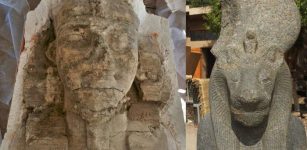 Two Giant Limestone Sphinxes Of Pharaoh Amenhotep III And A Statue Of Goddess Sekhmet Discovered In Luxor
Archaeology | Aug 11, 2022
Two Giant Limestone Sphinxes Of Pharaoh Amenhotep III And A Statue Of Goddess Sekhmet Discovered In Luxor
Archaeology | Aug 11, 2022 -
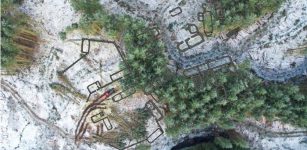 Ruins Of Post-Medieval Brunell Township Discovered In Glen Brittle Forest On The Isle of Skye
Archaeology | Feb 29, 2024
Ruins Of Post-Medieval Brunell Township Discovered In Glen Brittle Forest On The Isle of Skye
Archaeology | Feb 29, 2024 -
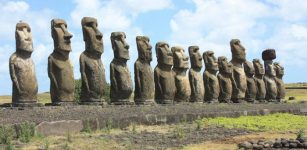 New Attempt To Solve The Easter Island Mystery – What Did Rapa Nui Look Like Before Europeans Arrived?
Archaeology | Sep 20, 2017
New Attempt To Solve The Easter Island Mystery – What Did Rapa Nui Look Like Before Europeans Arrived?
Archaeology | Sep 20, 2017 -
 Ancient DNA Reveals Origin Of First Bronze Age Civilizations In Europe
Archaeology | May 8, 2021
Ancient DNA Reveals Origin Of First Bronze Age Civilizations In Europe
Archaeology | May 8, 2021 -
 Priceless Artifacts From The Bactrian Hoard Are Missing – Where Are They?
Artifacts | Apr 3, 2022
Priceless Artifacts From The Bactrian Hoard Are Missing – Where Are They?
Artifacts | Apr 3, 2022 -
 Why Is Africa Called Africa?
Ancient History Facts | Dec 1, 2020
Why Is Africa Called Africa?
Ancient History Facts | Dec 1, 2020 -
 On This Day In History: Storming Of The Paris Fortress – Prison Bastille – On July 14, 1789
News | Jul 14, 2016
On This Day In History: Storming Of The Paris Fortress – Prison Bastille – On July 14, 1789
News | Jul 14, 2016 -
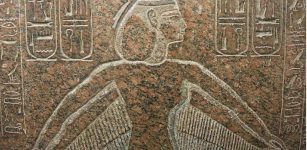 Nephthys – Egyptian Funerary Goddess Who Also Protected The Pharaohs While They Were Alive
Featured Stories | Aug 15, 2021
Nephthys – Egyptian Funerary Goddess Who Also Protected The Pharaohs While They Were Alive
Featured Stories | Aug 15, 2021 -
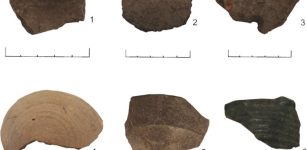 Earliest Evidence Of Wine Consumption In The Americas Found In Caribbean
Archaeology | May 23, 2023
Earliest Evidence Of Wine Consumption In The Americas Found In Caribbean
Archaeology | May 23, 2023 -
 Elusive Celtic Otherworld Where Tuatha Dé Danann Reside And Time Passes Slower
Celtic Mythology | Apr 7, 2018
Elusive Celtic Otherworld Where Tuatha Dé Danann Reside And Time Passes Slower
Celtic Mythology | Apr 7, 2018 -
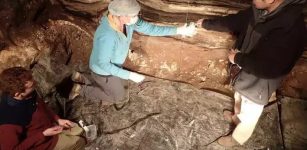 DNA Reveals 300,000 Years Of Hominin And Animal Presence At Denisova Cave
Archaeology | Jun 26, 2021
DNA Reveals 300,000 Years Of Hominin And Animal Presence At Denisova Cave
Archaeology | Jun 26, 2021 -
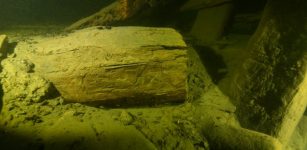 Barrels With Unique Intact Cargo Found On The Osmundvraket (Osmond Wreck)
Archaeology | Jun 7, 2024
Barrels With Unique Intact Cargo Found On The Osmundvraket (Osmond Wreck)
Archaeology | Jun 7, 2024 -
 Link Between Changes In Evolution And Climate Discovered
Archaeology | Oct 4, 2022
Link Between Changes In Evolution And Climate Discovered
Archaeology | Oct 4, 2022 -
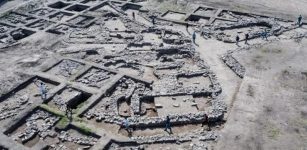 Incredible 5,000-Year-Old New-York-Like Metropolis Discovered In Israel
Archaeology | Oct 9, 2019
Incredible 5,000-Year-Old New-York-Like Metropolis Discovered In Israel
Archaeology | Oct 9, 2019 -
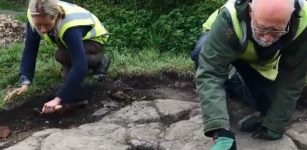 Uncovering 16th Century Scottish Royal Dockyards Used By King James IV’s Navy
Archaeology | May 24, 2018
Uncovering 16th Century Scottish Royal Dockyards Used By King James IV’s Navy
Archaeology | May 24, 2018 -
 Nicholas Of Cusa – A Medieval Scholar And Mystic With Highly Unorthodox Ideas
Featured Stories | Aug 13, 2021
Nicholas Of Cusa – A Medieval Scholar And Mystic With Highly Unorthodox Ideas
Featured Stories | Aug 13, 2021 -
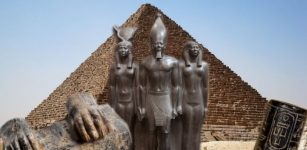 Pharaoh Menkaure – Egyptian Ruler Who Tried To Outsmart Fate
Featured Stories | Nov 18, 2020
Pharaoh Menkaure – Egyptian Ruler Who Tried To Outsmart Fate
Featured Stories | Nov 18, 2020 -
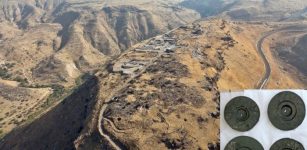 Ancient City Of Hippos-Sussita And The Mysterious Disc-Shaped Copper Plates
Archaeology | Apr 18, 2017
Ancient City Of Hippos-Sussita And The Mysterious Disc-Shaped Copper Plates
Archaeology | Apr 18, 2017 -
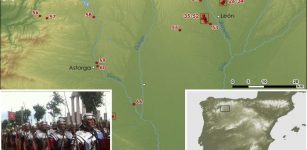 Satellite Images Of 66 New Roman Army Sites Show More Clues About One Of The Empire’s Most Infamous Conflicts
Archaeology | Dec 23, 2020
Satellite Images Of 66 New Roman Army Sites Show More Clues About One Of The Empire’s Most Infamous Conflicts
Archaeology | Dec 23, 2020




